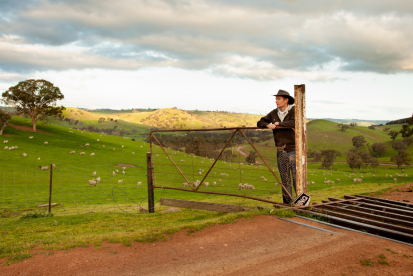2021 was a year of extreme volatility. On the one hand, it was one of the most expensive years; the costs for everything from insurance to interest rates, consultant fees, and repair expenses increased by quite a margin. On the other hand, despite the increased expenses, 2021 was also one of the most profitable years for farmers. With better-than-average produce and rapidly growing land value, farmers have found themselves in a wealthy situation. This has accelerated some major life and farming decisions regarding investments.
In our interview with Rob Grima, a farm business management consultant at Planfarm, he shares the right investment strategies for farmers to protect their newly created wealth and make the most of the opportunities presented by the changing market trends in 2022 and in the future.
Investing for your future and protecting your wealth
In 2020 and 2021, the average return on capital in cash only was 5%, while the top 25% of farmers achieved very close to 10%. Combining that with the rising capital appreciation of the land, farming stacks up beautifully against the stock market. At the same time, not every farmer wants to continue to work longer than initially planned.
According to Rob, there are two investment options depending on your situation:
1. Off-farm investment
You could invest in off-farm assets like buying a house or a boat to reward yourself or even have the capital transferred. But you must evaluate the impact of that expenditure on your future and business. You don't want to be in a difficult situation due to seasonal changes where you need the money back. You can do this by ensuring that your off-farm asset is liquid. The end game is to ensure that you have a solid balance sheet.
2. On-farm investment
There are two areas that you could invest in on-farm to set yourself up for the future:
- Investing in soil: You could invest capital, double down on baseload soil improvement (like lime or deep ripping), and setup your soil health for the next decade.
- Investing in machinery: You could invest in upgrading machinery and machinery supply. With high wait times of 12-18 months for certain machinery and the lure of reducing taxable income via investment in machinery, this could seem like a very enticing option. However, you must forecast and map out a machinery replacement schedule. Moreover, the increasing cost of maintaining gear also makes this about budgeting.
As per Rob Grima, while these on-farm and off-farm agriculture investments can help safeguard the existing wealth, you could further boost your profits by capitalizing on the changing market conditions. One way to achieve that is by employing a futuristic grain marketing strategy.
Boosting profits with a grain marketing strategy
Traditionally, farmers sell 30% of their estimated grain in January before getting a plant out of the ground. But that's not true for everyone; some farmers won't do that, and others are quite happy to sell 50% of their produce.
As every year, even in 2022, many farmers took the opportunity to fully gear themselves on an average outcome from January to March. Although the hedge level is less due to a better-than-average season, many farmers stopped selling as they felt like they lost a lot of money when the prices rocketed. They want to wait to see how the rest of the year pans out and capitalize on better opportunities.
However, according to Rob, farming and grain marketing is a long journey. And instead of being conservative, you should remember the reasons you went into those swaps, as those reasons persist. You should stay the course, keep talking to your advisors about the best course of action, and then play out the year as the conditions prevail.
Therefore, instead of being cautious due to perceived losses from recent grain marketing decisions, employ a grain marketing strategy that also considers the next couple of years. This will help you capitalize on excellent grain marketing opportunities in 2023 and 2024 to lock in great prices.
The bottom line is that you must employ the right investing strategy to maintain and grow the wealth and welfare created in 2021. However, it is just as essential to practice a fair amount of financial discipline even during healthy profits. To learn more about budgeting and maintaining healthy financial discipline, please refer to part one of this blog - Navigating through fluctuating market conditions in 2022/2023 with Planfarm.




